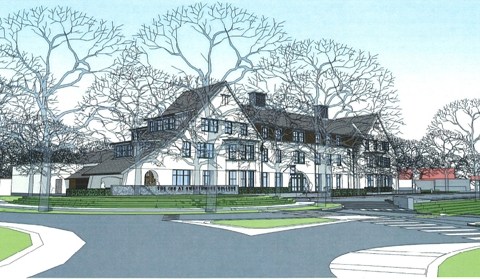
After more than a decade of intangible progress, a physical advance has finally been made on the Town Center West project. Construction on the project, more widely known as the Swarthmore Inn, began this summer with the rerouting of utility lines in the field behind the Palmer, Pittenger and Roberts dormitories (PPR), which has turned the previously grass-covered field into a plane of exposed soil.
Construction on the Inn has recently begun, bringing a radical trsnsformation to the landscape of the athletic fields by PPR. While the initial signs of construction are all too glaringly evident, the date for the project’s completion has yet to be finalized.
The development has come in spite of a variety of reservations voiced by both Swarthmore residents and students: concerns range from the potential traffic issues in the borough to labor conditions in the proposed hotel.
Concerns about labor conditions come primarily from the Student Labor Action Project (SLAP), a social action organization on campus. SLAP, as defined by is official website, is “a group of students dedicated to supporting workers rights locally, in Philadelphia, nationally, and internationally.”
Within the context of the Inn’s construction, SLAP has focused on ensuring that the hotel’s employees receive wage and benefit guarantees consistent with those received by other college workers. The labor debate will not be resolved for a while, however, since any labor agreement will have to be reached through the hotel operator, who will not be chosen by the college for at least another year.
Residents of Swarthmore have even longer to wait for resolution. Many are concerned about the impact the project will have on the town, something they won’t be able to assess until after the project is actually completed — by 2014 at the earliest.
Several residents echo the concern that the project will increase traffic in the downtown area. The official website for the project points to a traffic study being conducted by a private firm to assess the impact of the hotel, but residents expressed little faith in the study.
“When I asked them what the study is going to do, they said ‘it’s going to count cars,’” said Will Stanton, a carpenter and resident in the area. “It’s not going to interview commuters or local people who use the road, and it won’t get into the issue of diversion [ i.e. drivers avoiding the intersection by going through neighborhoods],” Stanton said.
Some worry that if traffic increases, businesses in Swarthmore, which are already struggling with unfavorable economic conditions, could feel its effects. “How many of the patrons of our business district will decide to shop elsewhere because it’s easier to drive and park [there]?” asked Swarthmore resident Bob Hall. “The majority, I suspect,” he said.
Residents also expressed concern that the bar in the new restaurant will allow students access to alcohol. “One of the most incredible things [about the debate] is that no one is raising concerns about bringing alcohol onto a college campus,” Stanton said. “I doubt that anyone will be able to show me any other college that wants to actually bring alcohol onto its campus,” he said.
This viewpoint, however, was met with skepticism from students. “The fact that alcohol is so readily available on campus means students won’t go to a bar to purchase it,” said Matt Heck ’13, an RA in Pittenger.
Even if students don’t go to the bar, though, of-age drinkers will. The administration believes that the people the hotel and restaurant will bring through the area will boost the town’s economy. “The Town Center West project will contribute new tax revenues to the Borough, generate jobs, and foster increased foot traffic to the Borough’s existing commercial district,” said Maurice Eldridge ‘61, Vice President for College and Community Relations.
This view was dismissed by several residents. The inn complex will bring little financial benefit to the town,” resident Joan Urban said in an email. “Not only will it provide negligible financial boost to shops in the ville, but it will provide almost no tax benefit,” she said.
Some residents wondered how the inn could act as a bastion of economic success for the town if it wasn’t successful itself. New hotels “are being built five minutes away in Media and Ridley … and our local Bed & Breakfasts are at 50% capacity now,” said Hall. Despite doubts, the project was actually born from the “Swarthmore Town Center Revitalization Strategy,” a 1999 study that made proposals for the economic regeneration of Swarthmore’s town center. The college took six of the 34 proposals and created one project — Town Center West.
In 2000, the Phoenix published an article that laid out preliminary plans for the project, reporting that the hotel would have 80 rooms, cost $10 million, feature a multi-level parking garage and be developed by the Haverford Hotel Group. Since then, the specifics have changed — according to the website, the hotel of the current plan would have 40-45 rooms, be designed by Cope Linder Architects and be developed by the college — but the basic concept remains the same: to provide an economic anchor for the west side of town (hence “Town Center West”).
Despite the first steps of construction having been initiated, it is still not certain when the project will be completed.
“The college must undertake a series of reviews and approvals with the Borough of Swarthmore and other government entities,” said Eldridge. “For example, the proposed realignment of Field House Lane, which is required to create a more direct entrance to the south campus, will require approval of the Pennsylvania Department of Transportation.”
The process of approval is scheduled to begin in early 2012.













